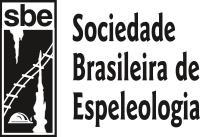O objetivo deste artigo é avaliar a diversidade taxonômica de morcegos fósseis e existentes na região da Serra da Mesa no Estado de Goiás, Brasil Central. Fósseis quaternários foram obtidos em quatro cavernas calcárias, a saber, Igrejinha, Carneiro, Nossa Senhora Aparecida e Itambé. As informações sobre a fauna de morcegos existentes utilizadas para comparação foram obtidas da literatura e do acervo do Museu Nacional (Rio de Janeiro). A identificação taxonômica dos fragmentos foi baseada em um estudo comparativo do aparelho mastigatório de espécies de morcegos existentes e fósseis. Foram identificados 430 fragmentos, compreendendo 27 espécies: Anoura geoffroyi, Artibeus sp., Carollia sp., Chrotopterus auritus, Desmodus rotundus, Desmodus sp., Emballonuridae sp. indet., Eptesicus/ Histiotus, Glossophaga sp., Lionycteris spurrelli, Lonchorhina aurita, Micronycteris megalotis, Mimon bennetti, Mimon crenulatum, Molossidae sp. indet., Myotis sp., Natalus stramineus, Phylloderma sp. n., Phyllostomus discolor, Phyllostomus hastatus, Platyrrhinus sp., Pteronotus davyi, Pteronotus parnelli, Sturnira sp., Tonatia sp. n., Lophostoma silvicola e Trachops cirrhosus. Phyllostomidae foi a família mais específica, mas surpreendentemente a maioria dos fragmentos fósseis foi atribuída às famílias Natalidae e Mormoopidae. Ambos são raros na área hoje. A redução populacional dessas espécies que vivem em cavernas quentes e úmidas (Natalus e Pteronotus) pode sugerir que o clima da área era mais quente e úmido durante algum intervalo do Pleistoceno Superior ou Holoceno Inferior. Este estudo apresenta o primeiro registro dos gêneros Lionycteris, Lonchorhina e Trachops para o Quaternário da América do Sul. A diversidade de quirópteros encontrada na Serra da Mesa é equivalente à descrita para a Bahia, que até então possui o registro mais abundante de morcegos quaternários da América do Sul. (tradução Google Translate)
The aim of this paper is to evaluate the taxonomic diversity of fossil and extant bats from the region of the Serra da Mesa in the State of Goias, Central Brazil. Quaternary fossils were obtained from four limestone caves, namely Igrejinha, Carneiro, Nossa Senhora Aparecida, and Itambé. Information on extant bat fauna used for comparison were obtained from literature and from the collection of Museu Nacional (Rio de Janeiro). The taxonomic identification of the fragments was based on a comparative study of the masticatory apparatus of extant and fossil bat species. A total of 430 fragments were identified, comprising 27 species: Anoura geoffroyi, Artibeus sp., Carollia sp., Chrotopterus auritus, Desmodus rotundus, Desmodus sp., Emballonuridae sp. indet., Eptesicus/ Histiotus, Glossophaga sp., Lionycteris spurrelli, Lonchorhina aurita, Micronycteris megalotis, Mimon bennetti, Mimon crenulatum, Molossidae sp. indet., Myotis sp., Natalus stramineus, Phylloderma sp. n., Phyllostomus discolor, Phyllostomus hastatus, Platyrrhinus sp., Pteronotus davyi, Pteronotus parnelli, Sturnira sp., Tonatia sp. n., Lophostoma silvicola, and Trachops cirrhosus. Phyllostomidae was the most speciose family, but surprisingly most of the fossil fragments were attributed to the families Natalidae and Mormoopidae. Both of which are rare in the area today. The population reduction of these hot-humid-cave dwelling species (Natalus and Pteronotus) may suggest the climate of the area was warmer and wetter during some interval of the Late Pleistocene or Early Holocene. This study presents the first record of the genera Lionycteris, Lonchorhina and Trachops from the Quaternary of South America. The diversity of Chiroptera found in Serra da Mesa is equivalent to that described for Bahia, which heretofore has the most abundant record for Quaternary bats from South America.
